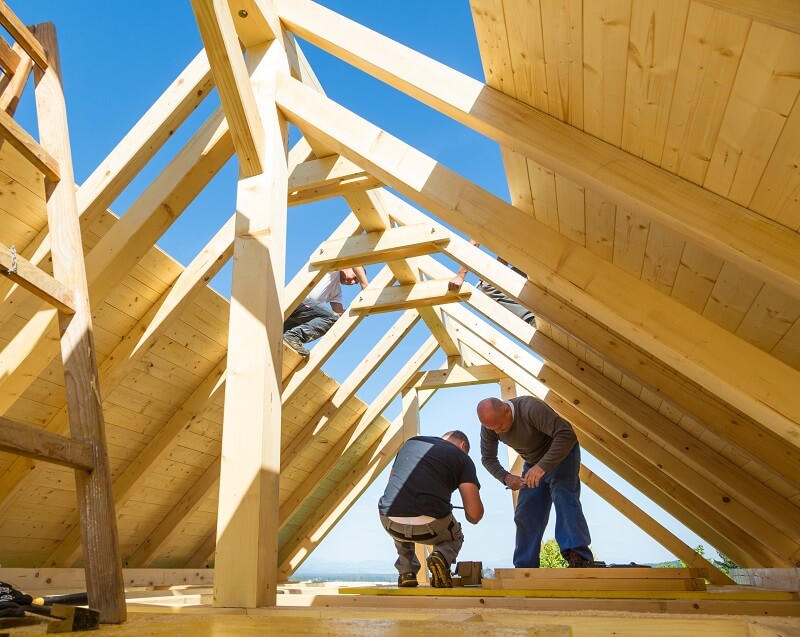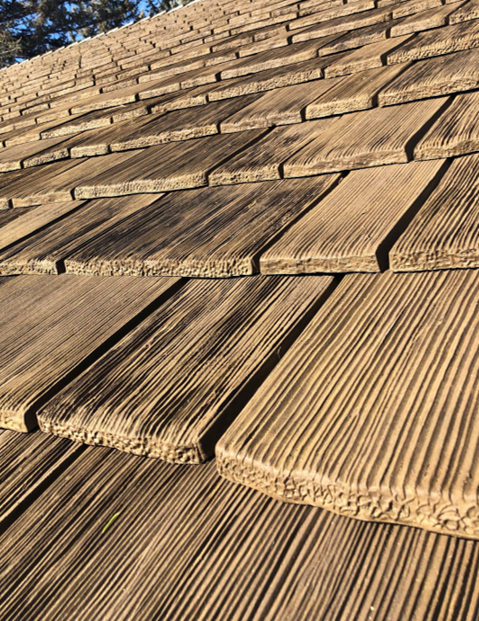The Ultimate Guide to Roofing Materials and Choosing the Right One
Exactly How to Pick the most effective Roof Product for Longevity and Visual Appeal
Choosing the appropriate roof material demands a careful examination of both resilience and aesthetic allure, as these aspects dramatically affect the total worth and performance of a property. Factors such as neighborhood climate, building design, and maintenance requirements play important duties in this decision-making process. While options like steel and slate supply remarkable longevity, the aesthetic attributes of a roofing can boost or take away from a home's style. Recognizing exactly how to balance these elements with financial constraints is essential; however, the subtleties of this balance might not be instantly evident.
Recognizing Roof Material Kind
When it comes to picking the ideal roof covering material, understanding the different kinds available is important for making an informed choice. The selection of roof covering material can substantially impact the longevity, appearance, and maintenance of your home.
Asphalt tiles are among the most prominent alternatives as a result of their affordability and convenience of installment. They are available in various shades and styles, making them versatile for different architectural styles. Metal roofing, understood for its durability, is available in materials such as steel, copper, and light weight aluminum. It supplies outstanding resistance to severe climate condition and can improve energy performance - Roofing.
Floor tile roofing, usually made from clay or concrete, is valued for its aesthetic appeal and longevity, though it can be larger and extra costly. Slate roof covering, a costs alternative, provides a classic look and outstanding sturdiness but needs specialized installment.
Reviewing Sturdiness Elements
Resilience is a crucial factor to consider for homeowners examining roofing products, as it straight affects the lifespan and performance of the roofing. Numerous elements add to the total toughness of roof materials, including climate resistance, product composition, and maintenance needs.
Weather resistance is vital; roof covering products should stand up to components such as hail storm, hefty rainfall, wind, and severe temperatures. Metal roofing systems are understood for their capability to sustain extreme weather condition conditions, while asphalt tiles might be more vulnerable to damages. Additionally, the product's capability to resist UV rays is critical, as extended exposure can cause deterioration.
The composition of the roofing material likewise plays a significant role in durability. Materials such as slate and floor tile offer outstanding longevity and can last for years with minimal maintenance. On the other hand, less sturdy choices, like particular types of asphalt roof shingles, might need replacement after 15 to twenty years.
Assessing Aesthetic Options
The selection of roof covering material expands past resilience; visual appeal plays a considerable function in the general worth and appearance of a home. House owners need to consider exactly how different materials match their residential property's architectural style and the surrounding environment. As an example, traditional materials like slate and clay tiles exude sophistication and can enhance the charm of mediterranean-style or historical homes.
Shade alternatives likewise substantially affect aesthetic allure. Roof materials can be found in a variety of colors, enabling property owners to pick shades that harmonize with the exterior paint, block, or stonework of their home. Darker shades can produce a modern, streamlined appearance, while lighter tones can supply an extra traditional and ageless feel.
Structure is another vital factor to consider. Materials such as wood trembles or metal can add deepness and aesthetic passion, establishing a home apart from its neighbors. In addition, house owners should believe regarding the long-term visual effect; some products, like asphalt roof shingles, may discolor over time, while others keep their appearance for years.
Inevitably, picking roof covering products that line up with both personal tastes and the home's building stability can dramatically improve aesthetic appeal and residential or commercial property value.
Environment Factors To Consider
Homeowners often forget climate factors to consider when picking roofing materials, yet these factors are essential for ensuring durability and efficiency. The regional climate considerably affects the toughness and performance of numerous roof options. Locations with extreme temperature levels may profit from materials that can withstand both extreme warmth and cold problems, such as metal roofing, which shows sunshine and resists rusting.

Wind resistance is one more crucial element, specifically in hurricane-prone locations. Roofings should be created with products that can withstand high winds, such as impact-resistant roof shingles or steel systems developed for wind uplift. By thinking about regional climate patterns and possible natural disasters, house owners can select roofing products that not only enhance their home's aesthetic appeals but likewise make certain long-lasting performance and defense.
Budgeting for Your Roof

Start by looking into the various roof materials readily available, as prices can differ dramatically. Asphalt shingles are commonly the most affordable option, while steel and slate roofs can require a bigger initial investment. Think about the long-term value of each product, as higher in advance prices might be balanced out by durability and reduced upkeep requirements gradually.
In addition, getting multiple quotes from trusted specialists can supply understandings right into labor costs and material rates (Roofing). Watch out for uncommonly low bids, as they may jeopardize high quality. It's recommended to establish aside a backup fund-- normally 10-15% of the total budget-- for unexpected problems that may emerge during installation.
Conclusion
Selecting the optimal roofing material demands an extensive assessment of toughness, visual charm, environment compatibility, and spending plan restrictions. Long lasting materials such right here as metal or slate offer longevity, while visual selections need to integrate with the home's building style. Environment visit homepage considerations play an important role in identifying appropriate materials, making certain strength against environmental obstacles. Inevitably, a knowledgeable decision will cause a roof service that efficiently stabilizes longevity and aesthetics, contributing to the total value and appeal of the home.
Picking the proper roofing material demands a cautious evaluation of both toughness and aesthetic charm, as these elements substantially impact the general worth and performance of a residential property. Metal roof covering, known for its toughness, is available in products such as steel, aluminum, and copper.The composition of the roofing material likewise plays a significant duty in longevity.The choice of roof covering material extends beyond longevity; visual charm plays a substantial duty in the overall value and appearance of a home.Choosing the ideal roof covering product necessitates a detailed analysis of durability, aesthetic appeal, environment compatibility, and budget constraints.